the Sponge Guide - www.spongeguide.org
Observed Characteristics:
black
encrusting
massive
tough
Bahamas
Colombia
Martinique
United States
Species Description and Notes
Description: Rounded masses to thick, sprawling encrustations, up to 10-50 cm in diameter and 2-20 cm thick. Color of the upper exterior black, base and interior cream. Surface generally even, smooth, often covered with sediment, but can be tuberculated, in portions or throughout the body; oscules round, slightly elevated or even, with the black rim contrasting with the surrounding sediment-covered surface, 2-5 mm in diameter. In some specimens, there are narrow meandering crevices, a few mm long and <1 mm in diameter. Consistency tough, rather leathery. Skeleton as ascending, diverging and reconnecting tracts, 4-15 spicule thick, which deep in the choanosome are more sparsely separated but become more crammed towards the surface, where they open up in about 2-3 layers of successively smaller spicules , the topmost one being a palisade of densely packed bouquets of the smaller spicule category. As spicule size varies with geographical location, specimens of areas with larger and thicker spicule sizes show much denser and thicker tracts. When visible, tissue in between ascending tracts with many small spicules strewn in confusion and often with darkly pigmented granular cells. Spicules in Bahamian specimens are slightly curved styles with smoth to slightly rugose heads and sharp to strongly mucronated tips; a few of the smaller spicules have a narrower head, conforming to anysostrongyloxea. Spicules in other areas are slightly curved anysostrongyloxeas (=fusiform styles) with the thickest portion in the apical half, resulting in very narrow heads and thicker tips, usually slightly telescopic; some heads may be slightly bulging, especially in smaller sizes. Spicules occur in 2-3 size categories, the two larger ones difficult to separate than the smaller one; smaller ones are more frequently true styles. In the Bahamas, the larger two categories are 650-1025 µm long by 3.8-15 µm wide, and the smaller category 330-460 µm long by 2.5-5.0 µm wide. In Florida, Martinique and the continental coast of Colombia spicules reach much larger sizes, the largest categories being 625-1825 µm long by 5.5-54 µm wide, and the smaller 220-520 µm long by 2.5-12.5 µm wide.
Notes: This species lives exposed in shallow lagoonal soft bottoms (usually attached to rubble) and in rocky shores and dock pilings, and can also grow on soft bottoms of the continental shelf (50 m in depth), agglutinating rubble. Originally described under genus Trachya, this species has as known junior synonyms Tuberella aaptos sensu Wilson (1902) and Prostylissa spongia de Laubenfels, 1953 (see also Rützler et al., 2014). There is a great deal of confusion regarding how many species there are in the Greater Caribbean shallow waters, with names such as Aaptos duchassaingi (Topsent, 1889), A. bergmani de Laubenfels, 1953 and A. lithophaga (Wiedenmayer, 1977) still to be clarified, plus species recently described from NE Brazil by Moraes (2011), Aaptos glutinans, and by Carvalho, da Silva & Pinheiro (2013), A. hajdui and A. potiguarensis. We found three distinct species of Aaptos growing together in the Florida Bay side of Key Largo, all pictured here, one black, with large spicules (A. pernucleata), one dark brown and tuberculate, with smaller spicules (Aaptos sp.2), and the third light brown and smooth with slightly thicker spicules (Aaptos sp.3). Following Rützler et al. (2014), we decided to call the black morphotype A. pernucleata. On the other hand, our material from the Bahamas concurs with Epipolasis lithophaga Wiedenmayer, 1977, although our spicules are predominantly true hastate styles instead of the anysostrongyloxea typical of Aaptos and as described by Wiedenmayer (1977). However, its skeletal arrangement coincides with Aaptos. Pending further work and analysis of types, we hypothesize that black A. lithophaga is a junior synonym of A. pernucleata regardless of its smaller spicule size, as spicules tend to be smaller in the Bahamas in general and co-occurring morphotypes should be compared instead of relying on absolute size.
Author Reference: (Carter, 1870)
Link: World Porifera Database
Tissue and Spicule Images
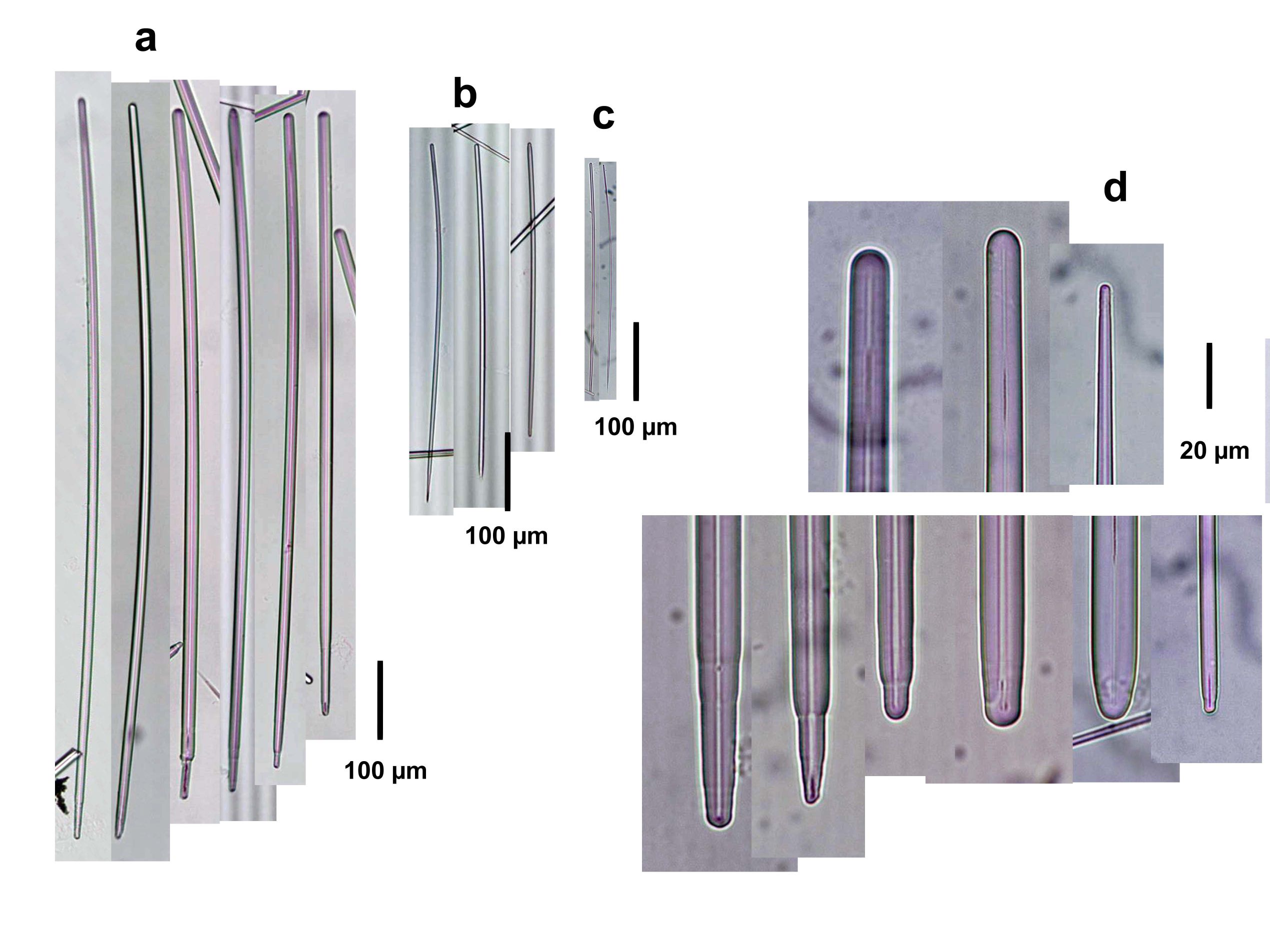
Spicule Images: a) to c) Styles in 2-3 categories; d) endings of styles. Sample from the Bahamas
No source specimen image available
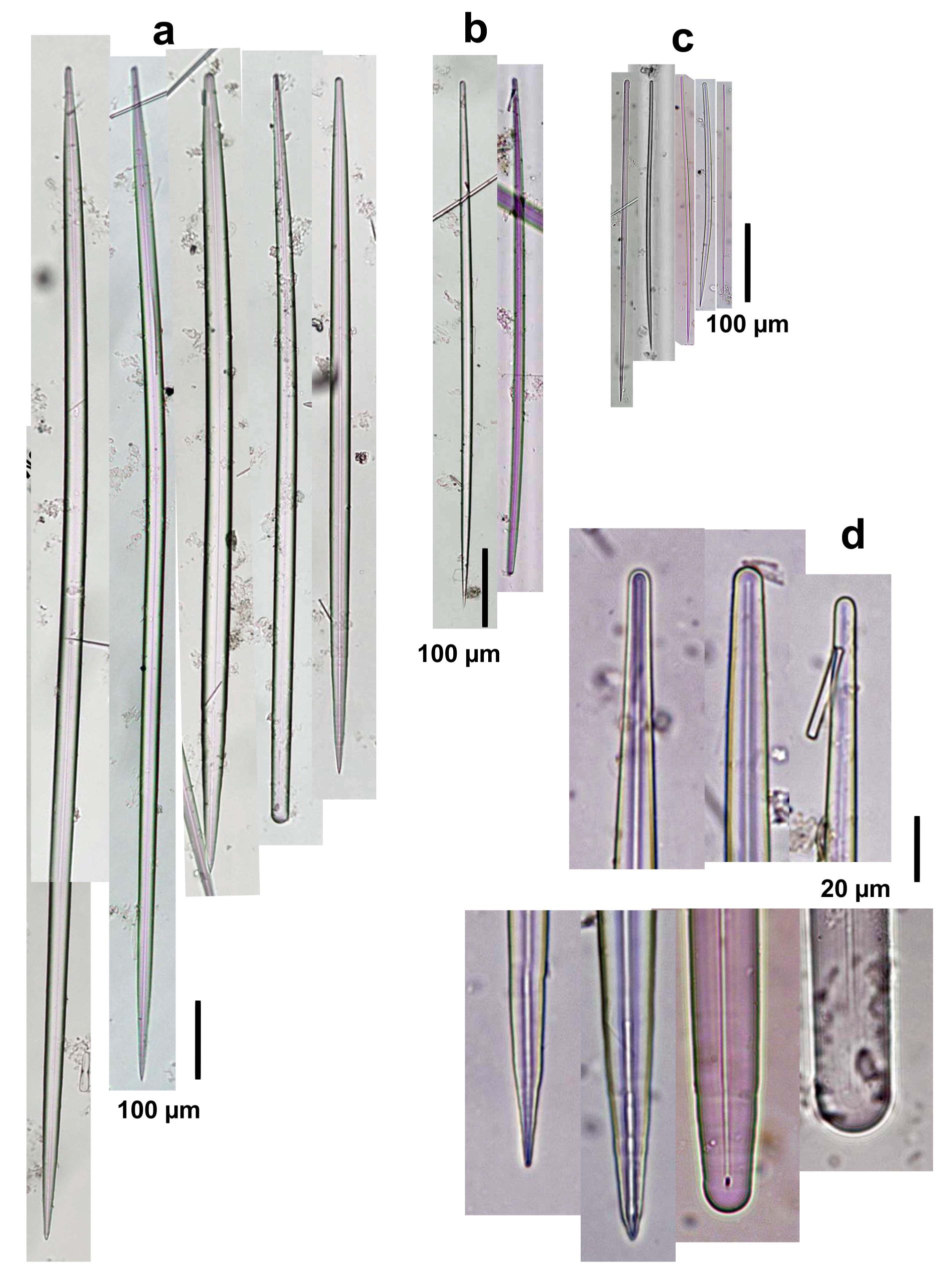
Spicule Images: a) to c) Anysostrongyloxeas (fusiform styles) in 2-3 categories; d) endings of anysostrongyloxea. Sample from Martinique. Notice larger spicule sizes in comparison to the sample from the Bahamas.
Source Specimen: http://www.spongeguide.org/ thumbs/00115/01906.JPG
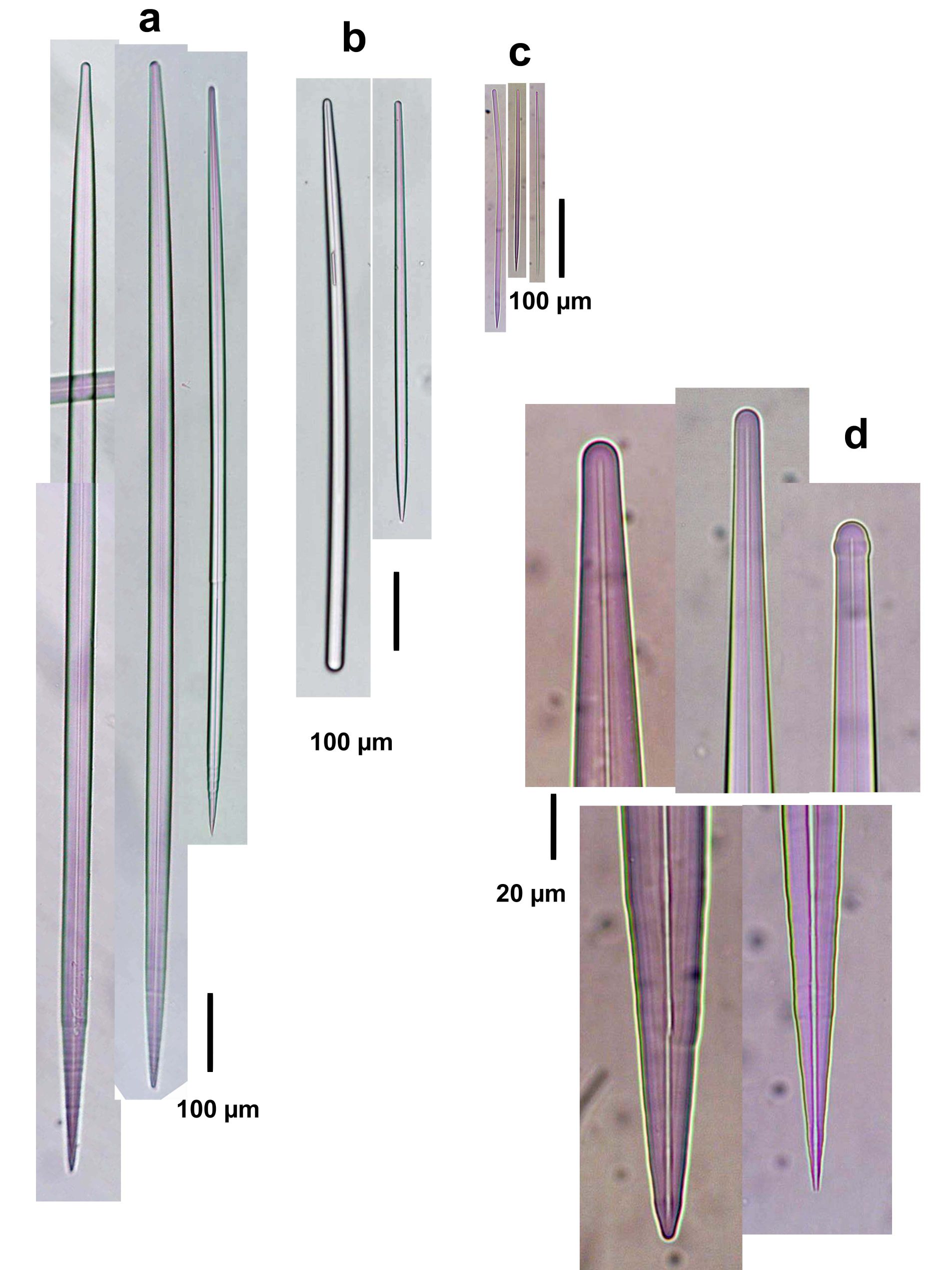
Spicule Images: a) to c) Anysostrongyloxeas (fusiform styles) in 2-3 categories; d) endings of anysostrongyloxea. Sample from Bahía Portete, Colombia.
No source specimen image available
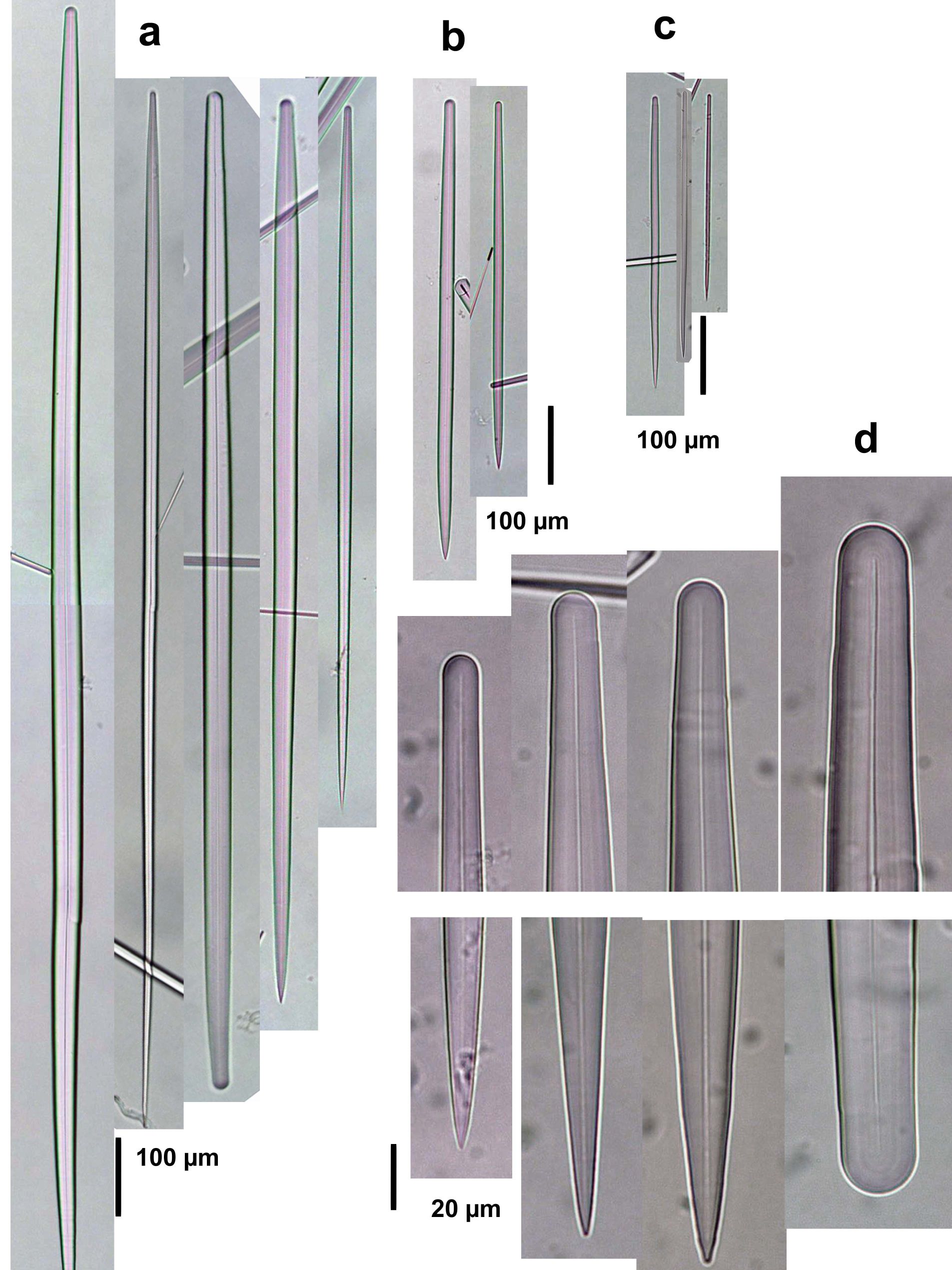
Spicule Images: a) to c) Anysostrongyloxeas (fusiform styles) in 2-3 categories; d) endings of anysostrongyloxea. Sample from the Florida Bay side of Key Largo. Notice larger spicule sizes in comparison to the sample from the Bahamas.
Source Specimen: http://www.spongeguide.org/ thumbs/00117/02091.JPG
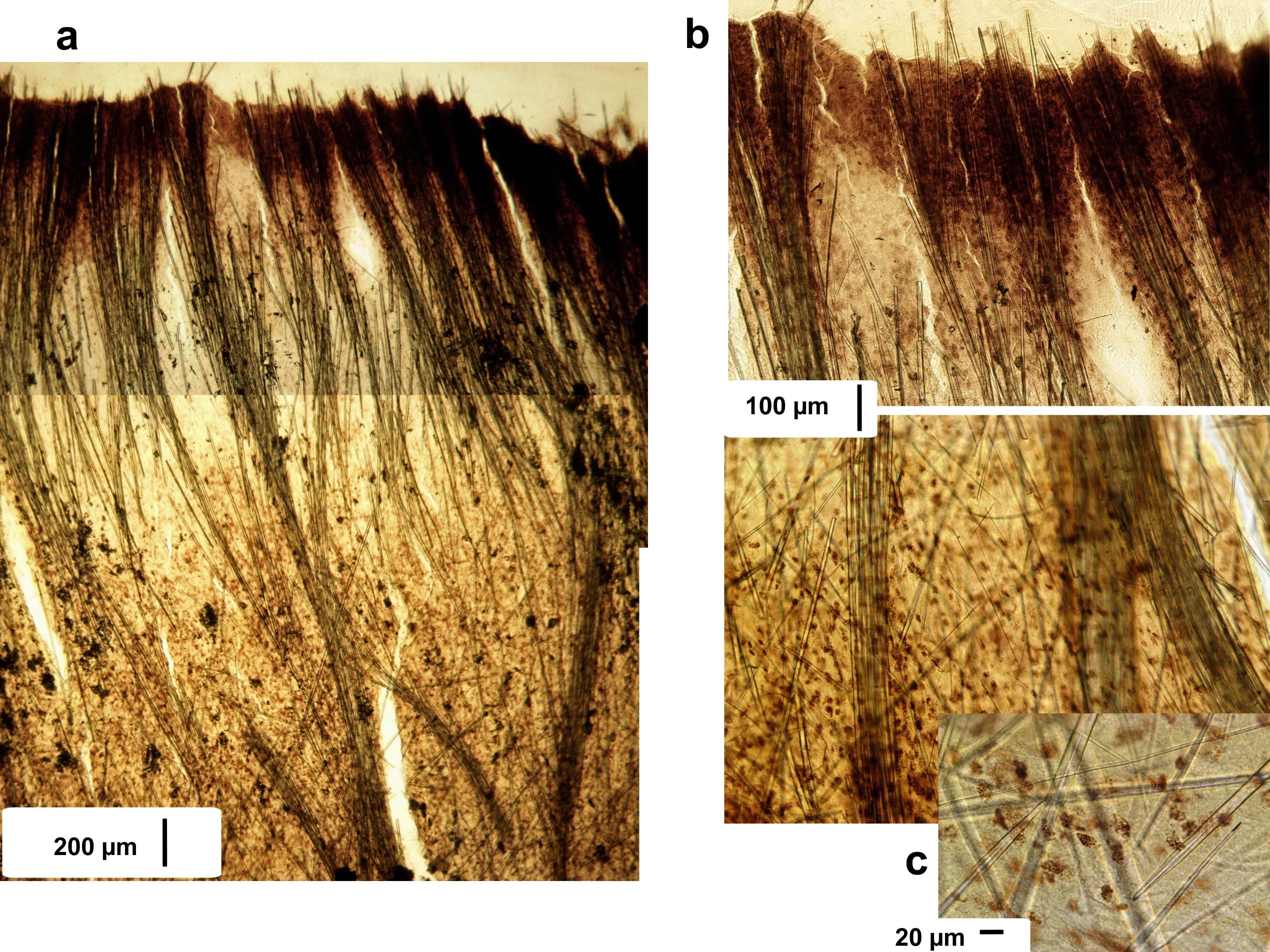
Tissue Images: a) Perpendicular section at the surface; b) magnification at the surface and of the choanosome; c) magnification of the choanosome. Sample from the Bahamas.
Source Specimen: http://www.spongeguide.org/ thumbs/00016/00492.JPG
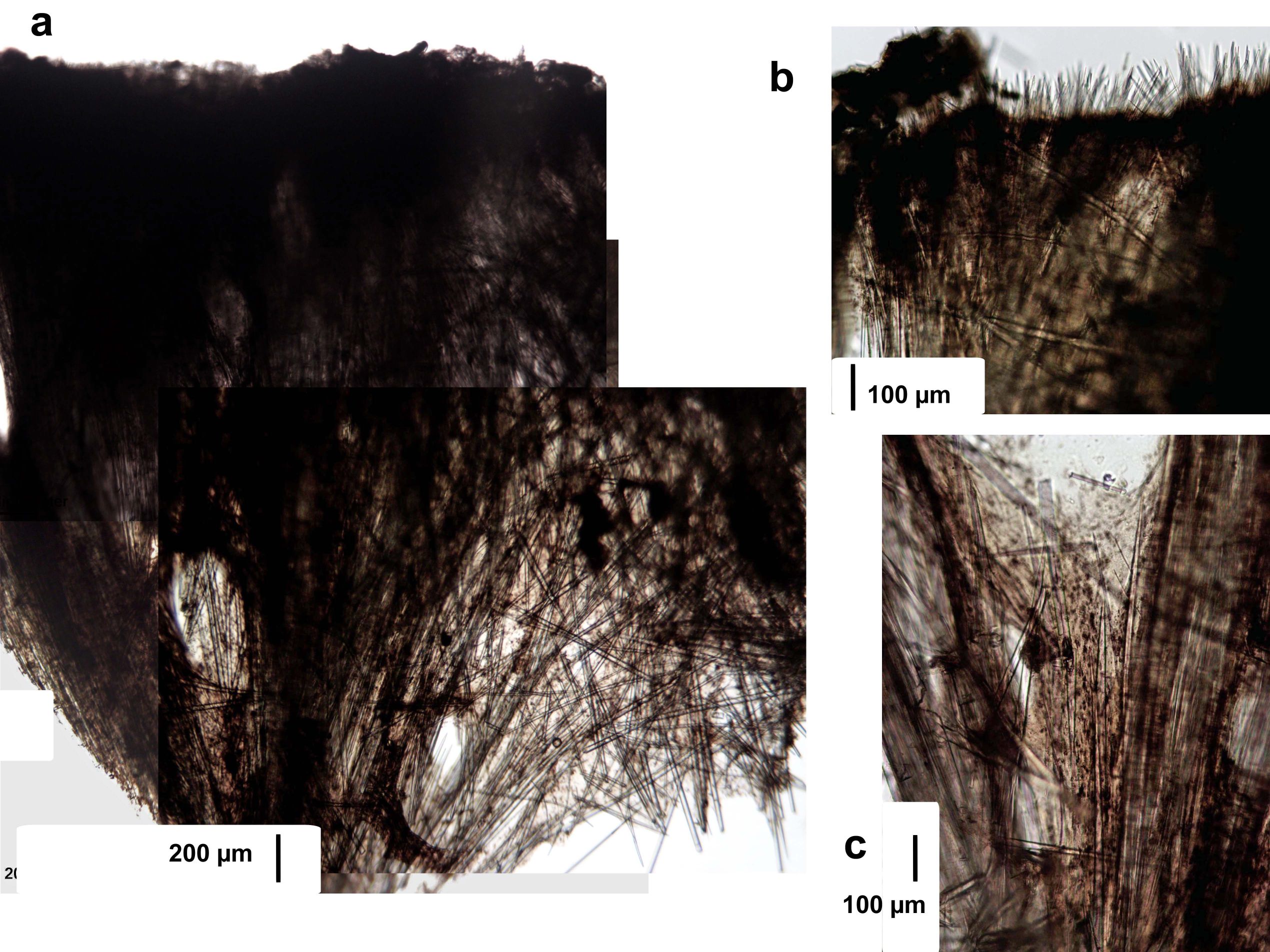
Tissue Images: a) Perpendicular section at the surface; b) magnification at the surface; c) magnification of an ascending tract near the surface. Sample from Martinique.
Source Specimen: http://www.spongeguide.org/ thumbs/00115/01906.JPG
Images
Aaptos pernucleata
Location: Bahamas, Little San Salvador
Photographer: Sven Zea
Location: Bahamas, Little San Salvador
Photographer: Sven Zea
Location: Bahamas, Little San Salvador
Photographer: Sven Zea
![<i>Aaptos pernucleata</i> <br />[Bahamas, Sweetings Cay]](thumbs/00040/01206.jpg)
Location: Bahamas, Sweetings Cay
Photographer: Sven Zea
Location: Martinique
Photographer: Sven Zea
Location: Martinique
Photographer: Sven Zea
Location: Martinique
Photographer: Sven Zea
Location: United States, Florida Keys
Photographer: Sven Zea
Location: United States, Florida Keys
Photographer: Sven Zea
Location: United States, Florida Keys
Photographer: Sven Zea
Location: United States, Florida Keys
Photographer: Sven Zea
Location: United States, Florida Keys
Photographer: Sven Zea
Location: United States, Florida Keys
Photographer: Sven Zea
Location: United States, Florida Keys
Photographer: Sven Zea
Location: United States, Florida Keys
Photographer: Sven Zea
Location: United States, Florida Keys
Photographer: Sven Zea
Location: United States, Florida Keys
Photographer: Sven Zea